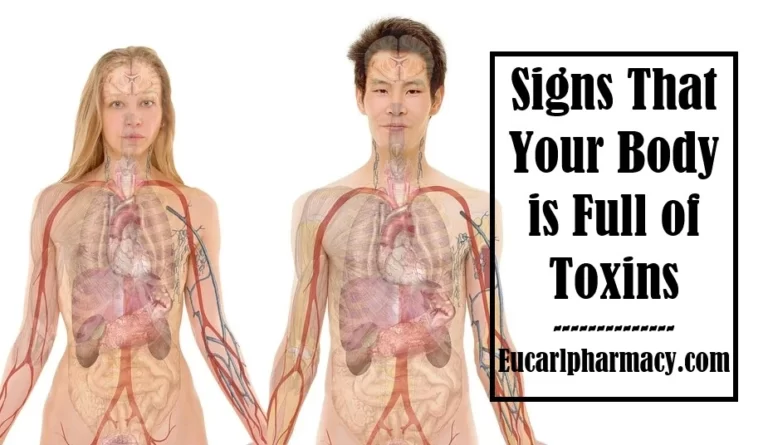Helminths (Parasitic Worms) & How They Affect You
Helminths like other parasitic worms have diverse ways in which they can affect humans and some other animals. Some have animals as their host whereas, some others have humans as their hosts. Just like every other parasite, this parasitic worm depends exclusively on the host for its survival and at the same time, harms its host.
Helminths are parasitic worms that feed on a living host to obtain nutrition and protection while weakening and ailing the host due to inadequate nutritional absorption. Intestinal parasites are the name given to these worms and their larvae, which inhabit the small intestine. Worldwide, there are about 1.5 billion people who have helminth infections brought on by soil.
Helminths control relies on routine deworming to get rid of the disease-carrying worms, health education to stop re-infection and improved sanitation to lessen the spread of disease-carrying eggs in the soil.
The impoverished and most neglected communities are among those affected by soil-transmitted helminth infections, which are among the most prevalent illnesses worldwide. They pass through the eggs in human feces, which in turn pollutes the soil in areas with sanitary condition
Classification of Helminths As They Affect Humans and Other Animals
The main species infecting humans are roundworms (Ascaris lumbricoides), whipworms (Trichuris trichiura), and hookworms (Necator americanus and Ancylostoma Duodenale). These types of soil-transmitted helminths are usually treated as a group because they require similar diagnostic procedures and respond to the same drugs.
- Nematodes or Roundworms: Nematodes are cylindrical and have lips, teeth, and tooth plates. Worms are either male or female.
- Trematodes including trematodes or flatworms: Trematodes or flatworms are flat, leaf-shaped, and non-segmented. They are hermaphroditic, meaning they have reproductive organs that are associated with both males and females.
- Cestodes or tapeworms: Cestodes or tapeworms are segmented and hermaphrodite. They have a sucker and a prominent hook-shaped rostrum.
- Monogeneans, as well as members of the flatworm phylum
- Schistosoma mansoni is an important human parasite, a trematode that is one of the main causative agents of schistosomiasis.
- Strongyloides stercoralis is an intestinal worm with a peculiarity: the parasite requires different diagnostic methods than other soil helminthiasis and therefore is often not detected. In addition, the parasite is not sensitive to albendazole or mebendazole and thus is not affected by large-scale preventive treatment campaigns targeting other soil-borne helminthiases.
Helminths all have a similar morphology and are multicellular organisms that are visible to the naked eye. Worms are usually contracted by walking on contaminated soil in hot, humid countries with poor sanitation and hygiene.
Global distribution and prevalence of helminths
Worldwide, more than 1.5 billion people, or 24% of the world’s population, are infected with earthworms. Infections are widespread in tropical and subtropical regions, with the highest numbers observed in southern Africa, the Americas, China, and East Asia.
More than 267 million preschool-age children and more than 568 million school-age children live in areas where these parasites are highly contagious and require treatment and preventive measures.
It is estimated that more than 600 million people are affected by S. stercoralis worldwide, but because this parasite also occurs in areas with poor sanitation, its geographic distribution is similar to that of other soil-borne helminthiases.
Diseases Caused By Helminths
- Earthworm infections are caused by several types of parasitic worms. They are transmitted by seeds in human feces, which contaminate the soil in areas with unsanitary conditions. Infected children suffer nutritionally and physically. Some of the diseases include:
- Hookworm disease is a common worm infection in developing countries
caused by Ancylostoma duodenale or Necator americanus. The disease leads to anemia and malnutrition. - Loiasis, or African eyeworm disease, is caused by the larva of Filaria loa loa, transmitted by the bite of the deer fly or mango fly. Adult worms move through the skin tissue under the conjunctiva of the eye. The disease causes red and itchy spots on the skin called “calibrate”.
3 Dracunculiasis is caused by the Guinea worm, or Dracunculus medinensis, which is transmitted by contaminated water. It is buried in the skin and causes severe inflammatory reactions. - Echinococcosis is caused by Echinococcus tapeworm. Usually, the liver is affected first, then the lungs and brain. Liver disease can cause abdominal pain and jaundice, while lung disease can cause shortness of breath and cough.
- Cysticercosis is caused by tapeworm or Taenia solium. Symptoms often go unnoticed for years, but eventually, develop painless sores in the skin and muscles or cause neurological problems.
How helminths affect us
Soil helminths are transmitted by eggs shed in the feces of infected individuals. Adult worms live in the intestines where they produce thousands of eggs every day. In regions where there are no sanitary conditions, these seeds pollute the soil. This can happen in several ways:
- The larvae attached to the vegetable are swallowed if the vegetable is not thoroughly cooked, washed, or peeled.
- Eggs are consumed from contaminated water sources.
- Eggs are picked by children playing in contaminated soil and put in their mouths without washing their hands.
- Coalworm larvae also hatch in the soil and produce mature larvae in a form that can actively penetrate the skin. People usually get ringworm by walking barefoot on contaminated soil.
There is no direct human-to-human transmission or infection through fresh feces as fecal-shed eggs mature in the soil for about 3 weeks before becoming infective.
A. lumbricoides, T. Ttrichiuraand hookworms do not reproduce in the human host, reinfection occurs only through contact with infective stages in the environment.
S. stercoralis can multiply in the feces, and uncontrolled proliferation can be fatal in immunocompromised individuals.
Nutritional Effects Of Helminths
Soil helminths affect the nutritional status of the people they infect in a variety of ways.
Worms feed on host tissues, including blood, resulting in loss of iron and protein.
Helminths also cause chronic blood loss in the intestines, which can lead to anemia. Worms increase nutritional deficiency. Also, roundworms can compete for vitamin A in the gut.
Some soil-transmitted helminths also cause a decrease in appetite and, therefore, a decrease in food consumption and physical capacity. T. trichiura in particular can cause diarrhea and dysentery.
Helminthic Morbidity and its symptoms
Incidence refers to the number of larvae deposited. People with mild infections (a few worms) usually do not have an infection.
More severe infections can cause a range of symptoms, including gastrointestinal symptoms (diarrhea and abdominal pain), malnutrition, general malaise and weakness, impaired growth, and physical development.
S. stercoralis can cause skin and gastrointestinal disease and may also be associated with chronic malnutrition in children. If the host is immunocompromised, the parasite can cause hyperinflation/dissemination syndrome, which is usually fatal if not treated promptly and appropriately and is often fatal despite treatment.
Strategic ways to control and eliminate helminths (parasitic worms)
The strategy to control soil helminth infections consists of disease control through systematic treatment of susceptible individuals living in endemic areas.
People at risk are preschool children, school-aged children, women of childbearing age (including pregnant women in the second and third trimesters and lactating women), and adults in some dangerous professions, such as tea or mining.
- WHO recommends regular drug treatment (deworming) without a preliminary individual diagnosis for all at-risk persons living in endemic areas. This procedure will reduce the worm load.
- Health and hygiene education reduces transmission and reinfection by promoting healthy behavior.
- Providing adequate sanitation is also important, but not always possible in environmentally poor areas.
- The goal of regular treatment is to reduce and maintain the intensity of the infection and protect the population at risk of infection from the disease.
Treatment of These Helminths
- Medicines recommended by WHO – albendazole 400 mg (given in a single dose) and/or mebendazole 500 mg (given in a single dose) – effective, cheap, and easy to use by ordinary workers will be They have passed extensive safety testing and have been used by millions of people with little to no side effects.
- Both albendazole and mebendazole are provided by the WHO to the national ministries of health of all endemic countries for the treatment of all school-aged children. Generic ivermectin is available for control of S. stercoralis at affordable prices.
- Infections of very high severity may cause intestinal disturbances that must be treated surgically.
Read Also: Health Benefits of Deworming Regularly for Adults (eucarlpharmacy.com)
Conclusion
Helminths; are parasitic worms humans in diverse ways. Some of these helminth infections or diseases can be prevented through good hygiene and regular deworming for both preschool and school children, women of childbearing age, and adults resident in the most endemic regions.
These helminths affect our nutrition and also morbidities. When not in check, it can cause serious intestinal obstruction that can only be eradicated via surgery.






